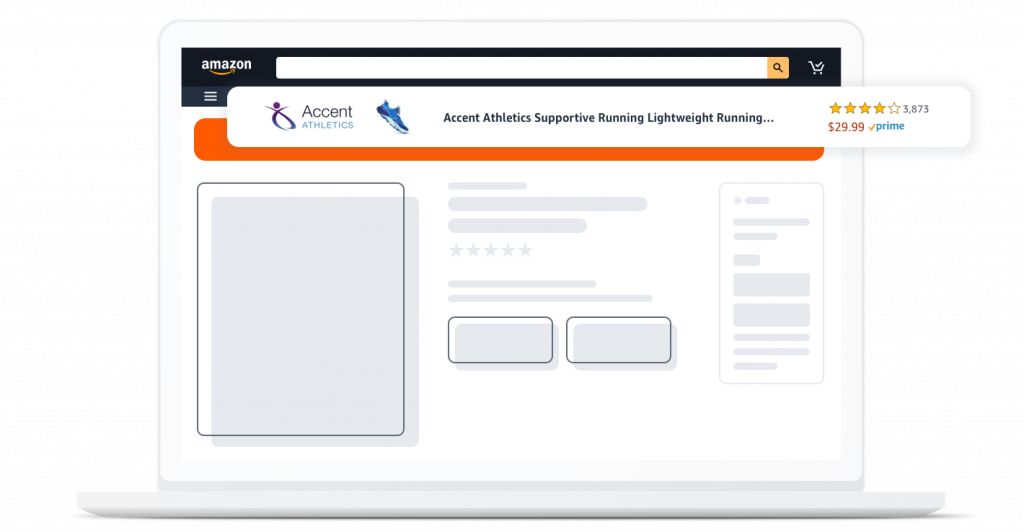Resources - Blog
Why You Need to Optimize Your Advertising on Amazon (and the Best Way to Do It)

Avoid costly mistakes when advertising on Amazon. Here are six tips you can use to optimize your advertising campaigns to invest in high-performing ads.
To keep costs low and increase your ad conversions, you need to continuously optimize your advertising on Amazon to learn what works best for your audience.
Between the large volume of traffic, data, and targeting capabilities on Amazon, brands, and sellers are leveraging Amazon advertising to take advantage of the growth potential. But unlike ten years ago, advertising on Amazon is incredibly competitive.
Feedvisor’s benchmark data across key categories in 2021 revealed that CPCs rose 56% YoY while ad spend rose 49%. To keep costs low and increase your ad conversions, you need to continuously optimize your advertising on Amazon to learn what works best for your audience. Competing effectively to get the best end results involves a strong strategy with targeting keywords and products, ad audiences, and investing in advertising across the funnel.
The best performing ads on Amazon are those that have been consistently assessed and optimized.
Why You Need to Optimize Your Advertising on Amazon
Don’t waste your money on non-performing ads. By optimizing your advertising on Amazon, you can avoid costly mistakes and become more strategic with your ads to gain visibility and increase sales.
Taking the time to optimize your ads on Amazon is the only way that you can reach the results you are seeking. The best performing ads on Amazon are those that have been consistently assessed and optimized. Once you build your campaign, you must continue to take deliberate actions to improve the performance of your ad.
The more you optimize your campaigns and keywords on Amazon, the easier this process will become as you gain more experience and better understand your niche on Amazon and other online marketplaces.
Keep reading for tips you can use on how to begin optimizing your ads on Amazon.
Stay on top of the latest e-commerce and marketplace trends.
How to Optimize Your Amazon Ads in 6 Steps
1. Organize Your Campaigns
Campaign structure is an essential piece of saving costs. There are a few different ways you can organize your advertising campaigns, including:
- By Brand
- By Ad Group
- By Product Categories
By organizing your campaigns, it will be easier to identify unqualified or wrong keywords, saving you money by avoiding unwanted clicks or incorrect audiences to drive ROI.
Further Reading: How to Optimally Structure Your Advertising Campaigns
2. Conduct Keyword Research & Clean Up Your Keywords
You must regularly check in on search queries and relevant keywords. It is vital to use the right keywords for each campaign; without it, you risk ending up on irrelevant search queries or results on Amazon.
For many sellers, finding the right audience and understanding relevant target buyer queries takes trial and error. Start your keyword research with short-term and direct keywords that define your product. This short-tail keyword will help you find suggested searches.
Once you find the right keywords, you can begin to invest a bigger budget for your products because you will develop a good Advertising Cost of Sales (ACoS) ratio. But beware of using the same keywords across campaigns to avoid pitting your products and campaigns against each other, leading to a decrease in returns. This can be solved by altering your keywords and creating negative keywords to avoid campaign cannibalization and match types like broad or exact to refine targeting for different campaigns.
3. Utilize High Converting Ads
Two of the highest converting ads used with Amazon are Sponsored Display and Sponsored Product. Review the brief explanations to learn why they are used and tips you can use to utilize these ad types in the future effectively.
Sponsored Display Ads (formerly known as Product Display Ads)

Amazon recommends running sponsored display ads all year round. It is a great way to reach relevant audiences both on and off Amazon by using dynamic segments. We recommend using this method for testing since you can edit existing campaigns without interruption, including adding or modifying headlines, logos, or custom product images.
Sponsored Product Ads
Use Sponsored Product Ads to combine automatic and manual targeting to increase your ad placements. By combining both, your automated campaign can be used for continuous target research with minimal effort and regularly move the high-performing keywords and Amazon Standard Identification Numbers (ASINs) to your manual campaign, where they can be precisely optimized for the highest performance. With this method, you are more likely to uncover keywords that are converting and keywords that should be marked as negative because they are either underperforming or irrelevant to your product and generate unnecessary PPC costs.
Further Reading: Amazon Advertising Benchmarks and Trends
4. Crunch Numbers & Consider your RoAS
Increasing your Return on Ad Spend (RoAS) is a common advertising goal, and understanding your goals and month-over-month progress will help guide your advertising strategy and measure your success, allowing you to decide how to bid on search terms.
Compute your RoAS for each keyword you are using in your campaigns to better understand the keywords with the highest RoAS to make better Amazon ad optimization decisions in the future.
Further Reading: How to Set Effective Goals For Your Amazon PPC Campaign
5. Ad Scheduling
Be aware of the impact of timing on your ad performance. There may be particular hours, days, weeks, or months that your ads are performing well. It is important to note that your daily ad budget begins at midnight.
Seasonality is key. Keep this in mind when you schedule your ads.
Many advertisers reduce their spending during “non-functional” hours or days when your customers may not be active, allowing you to utilize your budget to reach the biggest audience at the best times. This way, you can reduce your spending on the days or hours you see the worst performance, so you can use your budget to increase conversions.
6. Track Your Product Performance
You don’t just need to track your keyword performance for campaigns; you should also be monitoring your product performance. This will give you better insight into where you want to invest your PPC budget.
For some brands and sellers, you want to spend most of your budget on top performers unless you have other goals like liquidation. You should be willing to spend more on advertising for products that give you a high conversion rate.
Further Reading: PPC Audit Checklist
Final Thoughts
Ads are a vital part of any strategy and will remain crucial to profitability and brand awareness. Implementing optimizations to your ads will be highly effective and beneficial in selling your products. We recommend taking advantage of Amazon’s advertising business, now the third-largest digital advertising platform in the U.S. behind Google and Meta (formerly Facebook).
Connect with one of our Amazon experts today and learn how Feedvisor can support your efforts to optimize sales and RoAS/ACoS across Amazon ad types.
